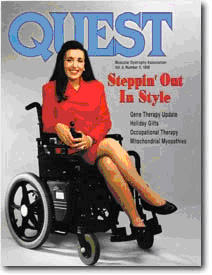Long-Distance TravelEric Lipp, Altheada Johnson, and Angela D'Arezzo plan a tripPowerful Patient 2008 Week 7Host: Joyce Graff, WebTalkRadio.net
People with disabilities are traveling more and more these days. Thanks to legislation in some countries and heightened awareness throughout the travel and tourism industry, accessible travel is much easier to find these days, but is by no means universal. You have to plan ahead to find hotels, restaurants, and points of interest where their idea of “accessible” and your needs are a good match.
Altheada and Fred Johnson are preparing for a trip with Joyce to South Africa in March 2008. The flight alone takes 17 hours from New York.
Joyce talks with Eric Lipp, head of the Open Doors Organization, which works with hotels, airlines, and others in the travel industry to increase accessibility for handicapped travelers.
Joyce and Altheada share the planning they have been doing in selecting a flight itinerary, and talk with Angela D’Arezzo, another wheelchair user who has made a number of long flights, about some of the particular challenges they should plan for.
About Our Guests
Eric Lipp is the Founder and Executive Director of the Open Doors Organization in Chicago. He consults with hotels, restaurants, and airlines to increase their accessibility for people with disabilities, and to assist them in complying with federal and state accessibility regulations. See http://www.opendoorsnfp.org
Angela D'Arezzo, a part-time model, was a spokesperson for the Muscular Dystrophy Assocation. She appeared on the cover of Quest, a publication of the MD Society, where she and other active men and women with neuromuscular diseases gave some advice on how to look your best -- and feel better in the process. Photo by Camera One. Quest 6:5, October 1999. She volunteers for the International Center for the Disabled (ICD), a nonprofit outpatient rehabilitation center in New York Cityhttp://www.icdnyc.org/
Altheada Johnson, a registered dietitian, volunteers for the VHL Family Alliance. She has served on their Board of Directors for nine years, and Chairs the Hotline Committee. See http://www.vhl.org/ She also volunteers for ICD, where she and Angela made a video on low-fat cooking for disabled people that is used as part of an internal program at ICD. It is not separately available for sale.
More details on myoclonus
Altheada mentioned having myoclonus when she went to Hawaii in 1996. The following definition is taken from Wikipedia.
Myoclonus is brief, involuntary twitching of a muscle or a group of muscles. It describes a medical sign (as opposed to symptom) and, generally, is not a diagnosis of a disease. The myoclonic twitches or jerks are usually caused by sudden muscle contractions; they also can result from brief lapses of contraction. Contractions are called positive myoclonus; relaxations are called negative myoclonus. The most common time for people to encounter them is while falling asleep (hypnic jerk), but myoclonic jerks are also a sign of a number of neurological disorders. Hiccups are also a kind of myoclonic jerk specifically affecting the diaphragm.
Preparing for a long-distance flight
Laurel Van Horn, program consultant for ODO, has a number of articles on the Open Doors website that can also be helpful in planning an accessible trip or meeting: http://opendoorsnfp.org/_wsn/page8.html
Tips for Long-Distance Flights
Booking accessible hotels and vacation spots
Eric mentioned some resources for planning accessible vacations:
Be sure to telephone the property and double-check the specifics of any important requirements you may have. Their understanding of “accessible” may or may not be the same as yours, even in the United States, and in other countries the laws are different.
Have fun!
|
